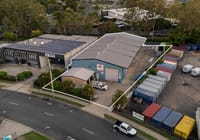
In their own words: what investment bankers say about real estate
Do you expect interest rates to begin falling again locally in 2025, and what will this mean for the property sector?
Tim Church, chairman and co-head of investment banking, Morgan Stanley Australia:
Morgan Stanley’s house view is that rates will remain unchanged until May 2025 when we forecast the first of three 25bps cuts for 2025 and then a further two 25bps cuts in 2026 to finish the Australian interest rate cycle at a neutral rate of 3.10 per cent.
Given that the listed REIT (real estate investment trust) sector in Australia remains the most interest rate sensitive sector, this trajectory of interest rate movements can only be positive for the REITs.
There are a number of other factors that will also be beneficial to the listed REIT sector in 2025, outside of interest rate movements.
Firstly, there is a lot of discussion about how expensive the listed markets are both locally and globally, with a number of large and mostly high-profile stocks and sectors hitting all-time highs, making it hard for investors to find value in the market. In the US for instance you have the “Magnificent Seven” that continue to hit all-time new highs (Tesla has gone up over 800 per cent in the last five years and Nvidia is up 783 per cent during the same period.) The Mag7 stocks – Apple, Microsoft, Alphabet, Amazon, Nvidia, Meta and Tesla – now make up 50 per cent of the Nasdaq and 25 per cent of the S&P 500. Both Apple and Microsoft have a market capitalisation that individually is larger than the whole of the listed companies on the ASX, but few believe that they don’t look expensive.

In a similar vein here in Australia, a number of our major stocks continue to trade at all-time highs, particularly the in banking sector. Take CBA, Australia’s largest and most widely held bank, trades at a price-to-earnings multiple of 28 times and price to book multiple of 3.5 times and a cash yield of around 3 per cent (fully franked), making it hard to find value at these levels. CBA screens as one of the most expensive banks globally but still maintains strong market support.
In stark contrast, there are a number of high-quality large listed REITs such as Mirvac, GPT, BWP Trust and Charter Hall Long WALE REIT that are still trading at material discounts to NTA [net tangible assets], discount to book, with attractive distribution yields ranging from 4.5 per cent to 6.5 per cent that screen great value at present. We may see in 2025 some rotation by general equity and small-cap managers out of overpriced stocks into a number of REITS that provide a relatively high distribution yield at attractive prices.
Secondly, with APRA now announcing that it will phase out bank hybrids – a very popular yield investment for retail investors – the listed REIT sector could be a major beneficiary. This is a longer-term thematic as it is planned to commence in 2027 for completion in 2032.
Currently, over $40 billion is invested in hybrids in Australia and it is quite plausible that the REIT sector could be an attractive alternative for investors seeking a relatively high distribution yield, particularly for retirees.
Ian Holmes, partner at Denison Partners:
We think interest rates will come down a little, but it will be gradual, and the reductions will be modest. We think sectors like real estate, that are interest rate sensitive, will be helped by stability in the level, and trajectory, of interest rates. At the moment, we are continuing to see volatility in rate expectations and that translates into volatility for REIT pricing.
That said, we don’t think falling rates are a complete panacea for the sector. It might mean discount rates come down a little, and funding costs reduce, but it also means the macro environment has deteriorated. For interest rates to come down substantially, either unemployment needs to increase materially, or the consumer needs to stop spending money (or both) – neither of those outcomes would be welcome.
Grant McCasker, head of Australia/NZ real estate, UBS:
UBS still expects the cash rate to remain on hold at its current peak of 4.35 per cent, until the first cut of 25bps in May. Our economics team thinks the risk of an early easing has been reduced by the surprise labour market strength and the substantial fiscal easing in MYEFO. Looking further ahead, we also expect the RBA to cut rates modestly by 25bps per quarter, down to 3.6 per cent by the end of 2025. Notionally, we expect another -50bps of easing in 1H-26, down to a terminal rate of 3.1 per cent.
While interest rates will likely be higher through 2025 than earlier expectations, we are heading into a period where cost of capital is increasingly stable. After a number of years where the market lacked conviction over interest rates, the more stable environment will lead to increased transactional activity.
Mitchell Schauer, managing director and head of real estate corporate finance & markets, Jarden:
Yes, while long-term interest rates remain volatile, our expectation is that the RBA will join other major central banks and begin reducing the official cash rate around Q2 this year – which will be supportive for both listed and unlisted market valuations. Importantly, evidence of the first cut should broadly boost sentiment and create more certainty for the sector in terms of the general trajectory of rates.

The upcoming February reporting season will start to show a stabilisation in asset book values, positioning the sector for modest cap rate compression in the second half of 2025 on the back of rate cuts. This should be further supported by increased transaction volumes in all asset classes – including office – as market players look to execute incubated business plans, including investment, development, and capital recycling.
We should also see an improved earnings growth outlook for the listed A-REITs, who may be able to start forecasting with less embedded conservatism. There should also be more groups who can execute on opportunities that are accretive due to a better cost of capital.
Which will be the hot sectors in real estate in 2025?
Holmes: A lot of people would say beds – the alternative “living” sectors – sheds and data centres. Undoubtedly capital will continue to flow to those areas, but there is a lot of capital chasing those opportunities already, and, particularly with data centres, requires significant scale to compete with incumbents.
Real estate private credit will continue to grow, and diversify from its overweight exposure to residential development. We also think that the market will rationalise, and those groups with more robust credit processes, and an ability to work out challenging exposures, will become differentiated.
We expect some of the best returns will be made by those groups who are prepared to be counter-cyclical, buying assets from vendors with significant liquidity pressure or in sectors that are currently unloved.
McCasker: The major global themes real estate investing themes remain AI and data centres, private credit, the emergence of private wealth as a key source of capital, debt refinancing – both cost and liquidity – and asset values versus replacement costs. This was evident in 2024 with a range of data centre transactions, many private credit platforms changing hands, and the cost of construction materially impacting development pipelines. We see the continuation of these themes to drive the “hot sectors” in 2025:
Data centres: Logistics landowners maximising value of existing land banks and taking on more risks but taking a larger share of economics.
Private wealth: We see this source of capital as a material growth driver for the funds management business and we suspect various groups will look to capitalise on this in 2025 to set up for long-term growth.
Construction costs: We see this as igniting rent growth once again for the logistics space as development pipelines are increasingly not viable. Globally in 2024, listed logistics companies were one of the worst performing subsectors globally. We expect this to reverse in 2025 as fundamentals improve. This is also playing out in the retail market which is back in vogue in a period where there is minimal supply. We are now witnessing a number of listed REITs globally actively increasing their exposure to retail.
Residential: Strong structural tailwinds are well recognised, and people are trying to work out where to play. Manufactured housing estates and purpose-built student accommodation have delivered risk-adjusted returns that meet investor objectives and have been increasingly popular, while Japanese capital in particular seeks exposure due to the attraction of Australia’s strong relative population and GDP growth.
Schauer: This is an exciting time as Australia’s institutional real estate market is diversifying at pace and new asset classes are building scale and track record. I expect two broad categories to have continued outsized growth.
One is residential-for-rent. In particular and while acknowledging development remains challenging, we are calling build-to-rent – multifamily housing – as being firmly back on the agenda following much-needed policy reform recently passed by the federal government. Well done to all stakeholders – including policymakers, the Property Council of Australia, and many market participants – for coming together to find a pathway here. The equalisation of withholding tax rates with other institutional asset classes creates a clearer signal, and less erosion of a fair rate of return, for foreign investors to allocate capital and support increased housing supply in Australia. This is good news for domestic investors too, who would like to see significant capital crowded in and a vibrant, liquid asset class developed.
We think the residential-for-rent thematic will extend to institutional growth across the housing continuum, including single-family, social and affordable, and seniors’ rental accommodation, noting that in the U, seniors’ living is primarily a rental model.
The second category is sectors with mega tailwinds, large addressable markets, and non-synchronised returns, such as industrial and logistics and data centres including specialised strategies like last-mile or cold storage, or edge data centres, as well as self-storage and private credit, where I think consolidation and further institutionalisation will create a smaller number of dominant, well-capitalised platforms. And not to overlook one of Australia’s traditional titans – we like the renewed fundamentals for high-quality retail too.
Church: While data centres was my 2024 prediction for hot sectors in last year’s roundtable, this thematic has a long way to run, and it is having “adjacency” benefits to the broader industrial markets around the globe. Well-located powered sites are not just beneficial to data centres they are also beneficial for a wide range of logistics and distribution-focused tenants and landlords who own such strategic sites, so this will see large-scale industrial operators/owners like Goodman, Charter Hall, Centuria, ESR, Mirvac, Stockland, and GPT all benefit.
In the market’s determination to diversify from the three traditional real estate asset classes of office, retail and industrial, we expect the broadly defined living sector – build-to-rent, retirement living, purpose-built student accommodation; land lease/manufactured housing – to be one of the major beneficiaries of further significant capital allocation, particularly due to the much talked about Baby Boomers seeking to alter their living needs as the oldest of this cohort is now turning 78 years old.
What are the prospects for M&A and/or IPOs in the listed property sector in 2025?
McCasker: We have an optimistic view on the return to M&A and IPOs in the REIT sector in 2025.

On IPOs, there is strong support for sector-specific, high quality, differentiated REITs with favourable earnings growth prospects. There is a desire for investors to gain exposure to new, appropriately structured products that meet these characteristics. However, the listed market and current rate environment are not conducive for a number of asset classes, but when the window of opportunity arrives, we would expect various groups to access the listed market.
On M&A, for a number of years the market has looked for options for a number of small and mid-cap REITs. In many instances, these REITs haven’t received the investors’ support or been given the cost of capital to execute on its strategy. We expect to see proactive decisions made to address a number of these REITs trading at a substantial discount to book values throughout 2025.
Schauer: With listed A-REITs now trading closer to rebased net asset values (NAVs) compared to this time last year, the environment is becoming more supportive for growth M&A as management teams and boards get more comfortable with the macro outlook and cost of capital, and equity markets are open to help fund sensible transactions.
We think M&A will feature groups seeking meaningful scale in new on-strategy high-growth sectors who can buy well or prefer not to slowly build organically over time. We also believe there will be more small deals that are cleaner to execute, portfolio deals driven by business simplification, and bolt-ons, as various new management teams seek to progress stated strategies and achieve asset allocation targets. Partnerships between listed A-REITs and private capital featured heavily in real estate corporate transactions over the last few years which has kept us busy, and I expect this trend will continue in 2025.
There is a renewed, proactive focus on deal certainty and tactics given the potential for regulatory reviews to significantly extend deal timetables, as well as key shareholder groups being increasingly prepared to intervene. So speed, less conditionality, and a clear pathway to completion will be key success differentiators for bidders, and important factors for target boards to analyse, particularly in contested situations.
Private markets still provide the ability for vendors and sponsors to achieve liquidity at good pricing and with less short-term market volatility through a process; however, the IPO market is also becoming more conducive while still selective and discerning on price. I think we’ll see groups start to consider dual-track options again (trade sale or IPO). To be successful on ASX we think differentiation from existing REITs and thinking creatively are vital in an IPO – for example, filling an in-demand asset class gap (there are many that investors would support); creating a unique business strategy; or bringing new specialist capabilities in real estate operations or capital allocation.
Church: We believe opportunistic M&A will continue to be a feature of the REIT sector as we saw at the beginning of the year with the agreed merger of Newmark Property REIT with BWP Trust (in an all-scrip bid) and now at the end of the year we saw Charter Hall and HostPlus successfully bid via an all-cash bid for the listed Hotel Property Investment REIT. IPO activity will still be relatively subdued as the REIT sector absorbs recent issues and still trades in the main at a discount to NTA.
Holmes: We think that a desire to increase scale and investor relevance will drive listed M&A activity, particularly at the smaller end of the REIT market. There are a number of vehicles that struggle to garner institutional attention because they are either too small or insufficiently liquid. Consolidation isn’t necessarily straightforward – particularly for the externally managed vehicles – but we think it’s inevitable over time.
While the sector is trading at current levels, traditional IPOs are really challenging, for two reasons. Firstly, there is a stronger bid for asset portfolios from private capital than what the listed market can provide. That might change in the future, but it’s certainly the case now. The second factor, future index inclusion, is more structural, and increasingly important given the level of ownership of listed REITs by index funds – in some cases up to 30 per cent of the register. An IPO needs to be big enough that there is a clear path to index inclusion, but the new capital needs to be raised from non-index investors prepared to take the risk on how the vehicle will trade and whether index inclusion will eventuate.
Which will be the biggest driver for investment and deals in the property sector: private capital or public markets/the REIT sector?
Schauer: We see it being less about private versus public capital and rather how they work together in different circumstances. As more REITs hope to harness private capital on their platforms, expect to see more joint investments through partnerships and modern investment vehicles. As demonstrated by recent successful partnerships, this can create significant value for all stakeholders. It needs to be done in the right way though, with genuine fiduciary alignment and balance between mandate longevity and asset liquidity, to attract the best people, capital and investment deal flow.
The evolution of existing wholesale pooled funds will be of impending sector significance as real estate fund managers – many of whom are listed – consider different strategies to manage upcoming liquidity reviews and required structural enhancements. Private capital investors are laser-focused on the return or recommitment of their capital and have increasing choice with managers, so both investors and REITs have interesting roles to play in future-proofing winning strategies for a new era in wholesale unlisted real estate.
Finally, the clock keeps ticking for real estate financial sponsors – who understandably largely sat on the sidelines over the last year given global macroeconomic uncertainty – to deploy capital. We estimate that these groups are sitting on about $19 billion of dry powder in Australia – funds raised but not yet deployed – and well above long-term averages. With the US Fed having commenced a rate-cutting cycle and the same expected here in 2025, it may be the year that private equity leans in on underwrites with more aggressive business plans to achieve their double-digit return hurdles.
Church: The fundamentals of the property sector will be the key driver of investment into the sector. The last few years post-COVID-19 have seen the emergency interest rate settings by central banks normalise from near zero levels. This normalisation of rates was particularly painful for the real estate sector. As interest rates and bond yields went up, commercial property values fell. In the main, we are now past the worst of this normalisation of rates and we should see capitalisation rates stabilising and debt costs coming down, which will deliver capital values stabilising and rents eventually increasing.
Given the quantum of investment capital sitting on the sidelines waiting to be invested, we believe 2025 will unlock the prior hesitancy for investment funds due to their natural adversity of “wanting to catch a falling knife”.
We believe unlisted institutional capital will still have a cost advantage over the listed REIT sector in the main but as interest rate cuts get delivered the competitiveness of REITs will make them more viable participants.

Holmes: We think the biggest driver for deals will be liquidity. In private markets, a need to access liquidity – for example, in wholesale funds and unlisted syndicates – will see asset transactions and potentially fund M&A.
In listed markets, a need for smaller groups to increase liquidity in order to attract new investors should drive M&A. And for larger listed REITs, accessing liquidity through capital partnerships with private capital will continue.
McCasker: The public markets and REIT sector will be substantially more active in 2025 but from a low base. Consistent with prior years, while listed market pricing is more attractive, private capital will incrementally be deployed in sectors where the listed market lacks appropriate investment opportunities – data centres, manufactured housing estates, storage, residential/PBSA, life sciences – as major real estate investors continually adjust the portfolio to capture various structural tailwinds, such as AI, e-commerce, ESG elements.











